Omron Data and telecommunication
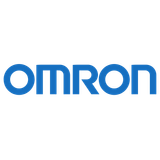






















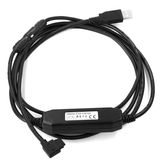

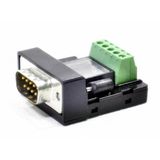
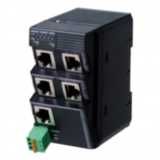
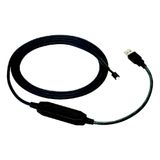
































-
-
1
- 2
-
Omron data and telecommunication components form the communication backbone of automation networks — connecting controllers, field devices, and operator interfaces across industrial systems. In procurement, these products are chosen not by marketing nameplates but by signal integrity, EMI resistance, connector durability, and certification under IEC/EN network standards.
Omron Network Infrastructure and Fieldbus Systems
Omron develops both wired and fieldbus solutions that link PLCs, inverters, and remote I/O modules across distributed architectures.
Typical supported protocols include EtherCAT, Modbus TCP, EtherNet/IP, and proprietary Omron SYSMAC networks used in motion and process automation.
Practical integration details:
- Shielded twisted-pair or fiber media depending on environment noise level.
- RJ45 industrial connectors with reinforced latch designs to prevent vibration release.
- Switching nodes with metal housings for EMI protection in control cabinets.
In large automation cells, engineers often mix Omron managed switches for main communication loops with passive distribution modules for local I/O — ensuring balanced bandwidth and reduced latency.
Omron Communication Interfaces for Control Equipment
Omron communication modules and adapters act as gateways between PLCs, HMIs, drives, and external systems.
Common interface families include:
- CP1W-CIF series for RS-232C / RS-422 / RS-485 serial communication.
- CJ1W-ETN Ethernet unit for networked controllers.
- NX-series bus couplers supporting modular I/O with EtherCAT backbone.
Each interface module is designed for mechanical stability on DIN rails and includes galvanic isolation between logic and communication lines — a key point when designing systems with mixed voltage domains.
Why it matters: isolation prevents transient surges from propagating through the data line, a common cause of PLC communication faults in factories.
Omron Data Transmission Cables and Assemblies
Omron industrial data cables use double shielding (foil + braid) and low-capacitance insulation to maintain high signal quality under noise.
Specifications:
- Characteristic impedance: 100 Ω ±10 Ω for Ethernet applications.
- Temperature range: –25 °C…+70 °C.
- Bend radius: typically 10× cable diameter.
- Jacket materials: PVC or PUR for flexible robotic routing.
Cables are pre-terminated with Omron RJ45 or M12 connectors and coded for different network types (A-coded for sensors, D-coded for Ethernet, X-coded for high-speed applications).
In most automation racks, installers prefer pre-made Omron cables to avoid impedance mismatches that occur when field-crimped connectors are not properly terminated
Omron Field Connectivity and Modular Interconnection
Omron field connectivity systems include terminal interface blocks, wiring hubs, and I/O link modules that extend communication from cabinet to machine.
For example:
- XW2B interface blocks provide a clean transition from I/O module to machine wiring.
- XW2K compact wiring systems allow direct PLC-to-field connection, saving space and wiring time.
- Omron SmartSlice modular I/O supports local or remote mounting with automatic addressing over EtherCAT.
These modules reduce wiring complexity and speed up assembly, especially in OEM environments where repeatable panel layout is critical.
Technical Standards and Performance Considerations
- EMC compliance: EN 61326, ensuring immunity to industrial noise.
- Transmission categories: Cat 5e / Cat 6 depending on data rate (100 Mbps–1 Gbps).
- Insulation resistance: ≥ 500 MΩ at 500 V DC between conductors and shield.
- Vibration rating: 10–55 Hz, amplitude 0.75 mm.
- Connector durability: ≥ 750 insertion cycles.
For buyers, these figures define the expected lifetime and safety margin when cables and interfaces operate in harsh, high-vibration environments.
Procurement Logic and Common Mistakes
Key evaluation factors:
- Match network type (EtherCAT, Modbus TCP, RS-485) with equipment protocol.
- Verify shielding and grounding design relative to machine EMC conditions.
- Confirm connector coding and pinout — mismatches cause hidden communication error
- Ensure temperature and bending limits suit routing through moving parts.
- Check for CE/EAC certification when panels are exported to EU or CIS markets.
Typical mistakes:
- Reusing office-grade Ethernet cables in noisy workshops — results in intermittent communication.
- Mixing RS-232 and RS-485 wiring under the same conduit.
- Ignoring shield continuity between cabinet and field — leading to ground potential differences.
Integration of Omron Communication Products in Automation Networks
Omron data and telecommunication elements integrate seamlessly with the brand’s automation ecosystem — NJ/NX PLCs, NA HMIs, and G5 servos.
All share consistent wiring conventions and diagnostic tools within the Sysmac Studio software.
For hybrid systems, Omron modules interoperate with third-party devices using open protocols (EtherNet/IP, Modbus TCP, PROFINET) and standard connector geometry — avoiding vendor lock-in.
Why Choose Bank of Lamps as Your Omron Distributor
- EU-based warehouse (Latvia) with direct dispatch across Europe.
- All Omron communication components certified under CE and EAC for audit-ready documentation.
- Cross-reference support for replacing legacy or discontinued network modules.
- Consolidated shipping of Omron cables, interfaces, and accessories under one invoice.
- Stable B2B logistics network to Germany, France, the Netherlands, Baltics, Spain, and beyond.